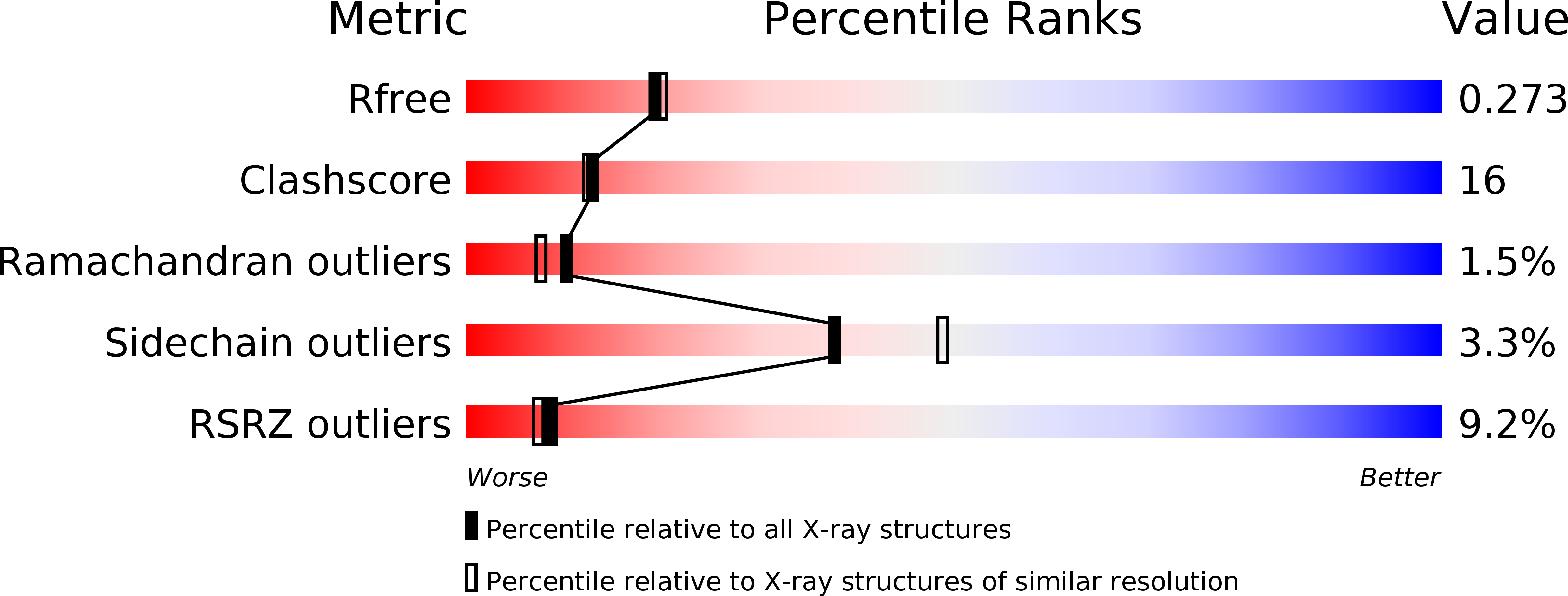
Deposition Date
2008-08-12
Release Date
2008-11-25
Last Version Date
2024-11-06
Entry Detail
PDB ID:
2W07
Keywords:
Title:
Structural determinants of polymerization reactivity of the P pilus adaptor subunit PapF
Biological Source:
Source Organism:
ESCHERICHIA COLI (Taxon ID: 364106)
Host Organism:
Method Details:
Experimental Method:
Resolution:
2.20 Å
R-Value Free:
0.27
R-Value Work:
0.23
R-Value Observed:
0.23
Space Group:
P 41 21 2


